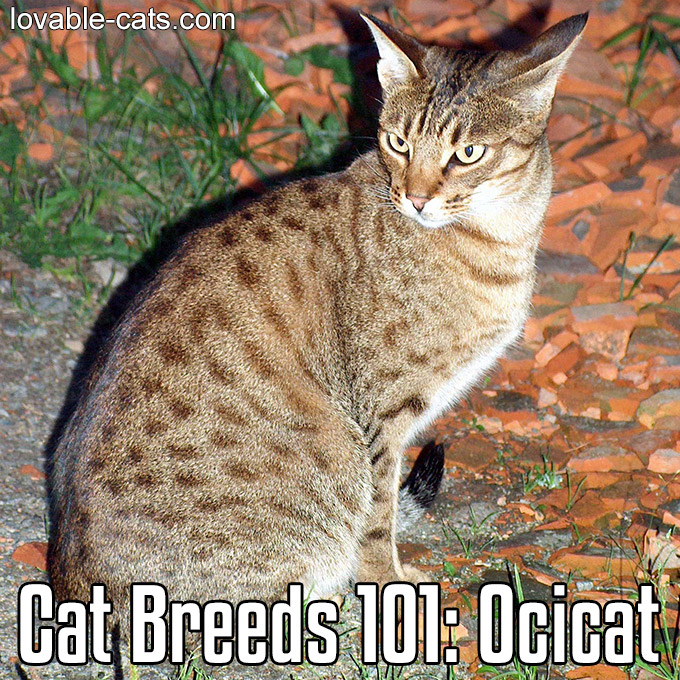
Cat Breeds 101: Ocicat – Image To Repin / Share
Photo: Wikipedia – lic. under PD
Despite its wild and exotic appearance, the Ocicat has never failed to endear itself to the hearts of many fanciers. It is believed that the breed is the product of crossing three breeds – the Abyssinian, the American Shorthair, and the Siamese. The breed was actually an unexpected result of a breeding experiment which aimed to develop an “Abypoint Siamese”. Today, they are the only breed of felines which have emulated the appearance of wild cats.
The origin of the Ocicat breed can be traced back to a kitten named Tonga, a lovely ivory-colored cat with golden spots. Tonga was a neutered cat which was later sold as a pet. When the cat was featured in the Detroit Newspaper, it caught the attention of Dr. Clyde Keeler, who expressed his desire to own a domestic cat with the wild and exotic appearance. Breeding was repeated, which gave birth to the Ocicat breed.
Two years later, the breed was officially recognized by the Cat Fanciers’ Association (CFA). However, it was only in May 1987 when the CFA granted the breed’s championship status. Meanwhile, The International Cat Association (TICA) granted the breed’s championship status in August 1986. [1]
The Ocicat breed may actually appear in a variety of colors, which include chocolate, cinnamon, brown, blue, fawn, lilac, tawny, and lavender, all with silver in them. They also come in four patterns which include ticked, solid, pointed, and classic tabby. According to TICA, male Ocicats usually weigh 9 to 14 pounds, while their female counterparts usually weigh between 6 and 9 pounds. [2]
Meanwhile, their striking almond-shaped eyes add more to the exotic appearance of the breed. All colors are acceptable for the eyes of Ocicats except for blue. There is no correspondence between the color of their coats and eyes. [3]
The Ocicat breed is also noted for its muscular body which normally reflects power and strength. Both males and females of this breed seem heavier for their size, with females smaller than their male counterparts. However, they are still able to leap to high perches with admirable grace. Also, the breed is known to be agile, alert, graceful, and athletic.
This breed of cat is best distinguished for its wildcat look, yet despite their appearance, Ocicats are actually considered as devoted family members. They are the type that would check out on strangers for any opportunity to play with them, or curl up on their laps. Also, they are noted for being adaptable at home, which is characterized by their ability to learn house rules within just a short period of time.
The temperament of Ocicats is often compared to that of dogs. They are not the clingy or demanding type of cats, but they don’t like being left alone for a long period of time. Also, they are known to be sociable and friendly cats that can be very accommodating towards strangers. [4]
Compared to other breeds of felines, Ocicats require less maintenance. In fact, regular brushing to remove dead hairs should be enough.
References:
[1] https://www.cfainc.org/Breeds/BreedsKthruR/Ocicat.aspx
[2] https://www.tica.org/public/breeds/oc/intro.php?zoom_highlight=Ocicat
[3] https://www.ocicats.org/standard-of-points.shtml
[4] https://en.wikipedia.org/wiki/Ocicat
